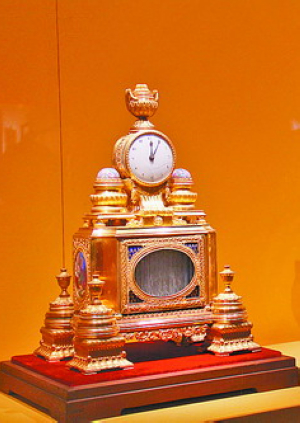

A gold plated brass device that encompasses a music box, clock and fountain. [Photo/xmnn.cn]
They will be displayed for the public for the first time on the small island of 1.88 square kilometers, which itself boasts a rich mix of western architecture, the result of its colonial past.
It will also be the first time that the Palace Museum, which with its 15.3 million visitors per year is one of the most popular tourist attractions in the world, has built a new museum to display its prodigious collection of foreign cultural relics.
The Gulangyu museum is located at the former sites of Hope and Wilhelmina Hospital, founded by Dutch American John Abraham Otte (1861-1910) in 1898, and the affiliated Nurses’ School that was established in 1926, which are now a national heritage site, known as Hope Hospital and Nurses’ School.

The Hope Hospital and Nurses’ School is the location of the Palace Museum’s first offsite exhibition space on Gulangyu Island, Xiamen city, Fujian province. [Photo/xmnn.cn]
The Classical Revival buildings will be kept in their original form, from the layout to building materials to appearances, while Palace Museum-standard security equipment will be installed to protect the treasured exhibits.
The Gulangyu museum’s establishment was based on an agreement signed between the Palace Museum and the Xiamen authorities in 2014.
According to Shan Jixiang, the Palace Museum’s curator, the collaboration with Xiamen was designed to find a proper exhibition space for the museum’s hidden gems that had never been put on show for the public before.
China has launched a new pilot program to allow eligible enterprises greater access to overseas financing in support of green and low-carbon transformation projects, the country's foreign exchange regulator said on Aug 21.
To further streamline the experience, China is expanding tax refund stores, broadening the range of refundable goods, and refining refund procedures, ensuring an efficient and seamless shopping experience for global visitors.